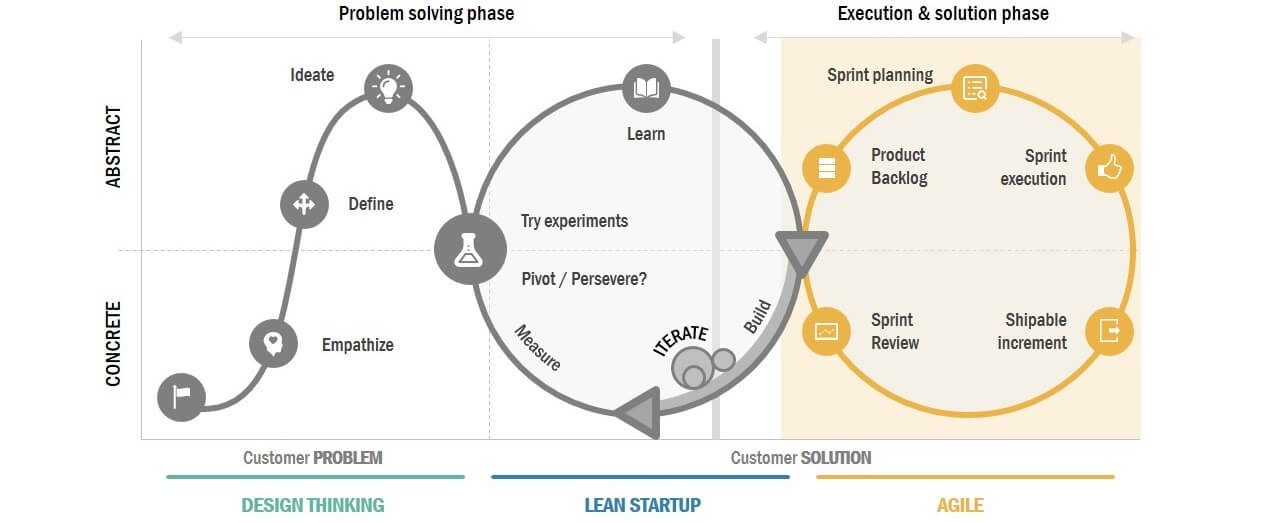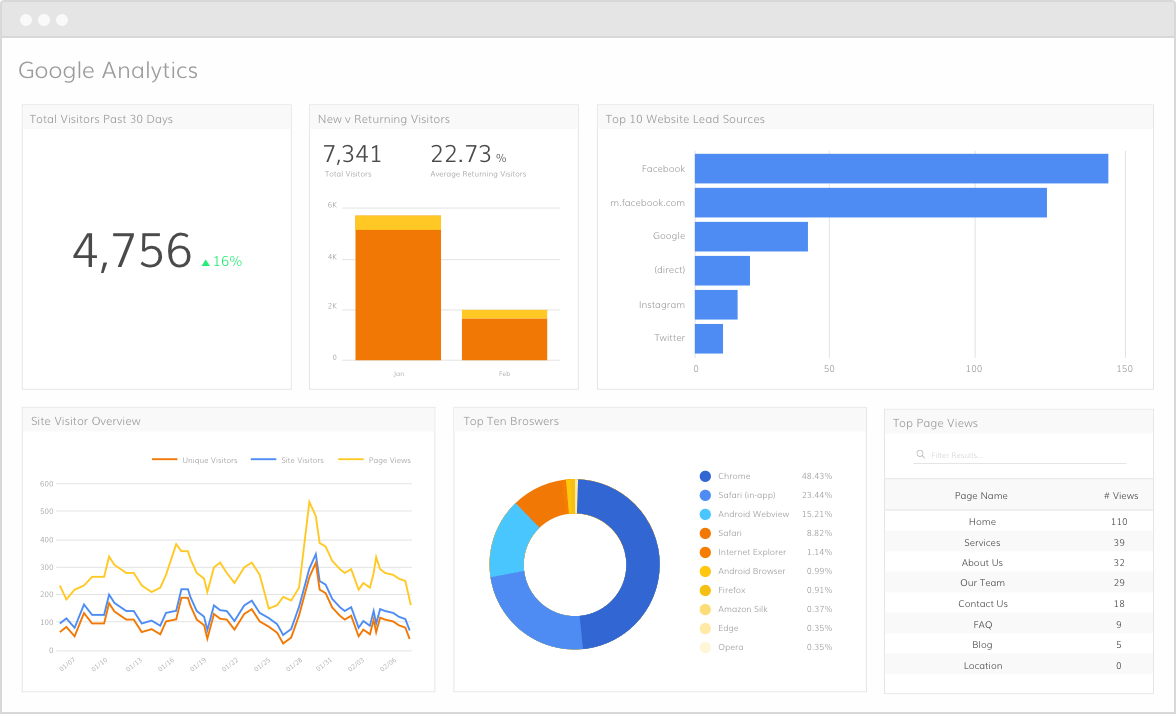In this blog post, we are going to discover the 5 most important reasons why most Software-as-a-Service SaaS startups fail, and how to overcome these challenges. We will also give out 20 awesome tips on how to sell SaaS in 2023.
SaaS is becoming an increasingly viable choice for businesses. Thus, understandably so, it is growing 5 times faster than enterprise software. It is estimated to hit 100 billion USD in 2020, while still being only 20% of the enterprise market.
A survey was conducted to unveil the reason behind companies now opting for SaaS: The findings of the survey suggest that SaaS offered conglomerates with higher agility and cost-effectiveness; it is also popular among businesses for its simplicity and user accessibility.
However, if SaaS is as efficient, why do most SaaS startups fail? An estimated 92% of SaaS Startups are still bound to fail despite the growing rate. Mentioned below are some major reasons explaining why.
Top 5 Reasons Why Most SaaS Startups Fail

1. Management Without Vision
An environment should be created where employees take responsibility and are the engines of profitability. Building a strong and well-executed management team is one of the areas that impact most outcomes when it comes to SaaS startups.
According to Gallup, good managers account for a 70% variance in the engagement of an employee. Two behaviors affect employee performance – communication and recognizing the strength of employees.
Poor communication can lead to a lack of understanding, adversely affecting performance. A study states that spending just 1% of payroll on employee recognition has helped 85% of companies see improvement in employee performance.
2. Lack of Market Research
Ask yourself this question, “Is my startup trying to solve a problem that needs to be solved or not?”. The answer should be an undisputed ‘yes’.
Market research allows startups to have new insights. For SaaS startups, it is essential to know the target market and customer demand. For example like how changes in the market can affect their business and how they should react to it.
Target marketing allows you to pitch sales in a specific market that is likely to buy from you; it is a much more effective way of reaching potential customers.
3. Flawed Business Model
If you have the right product, the customers will come. Is that correct? Yes, but is it entirely true? Not at all. Acquiring customers is hard work.
When Blockbuster was founded in 1985, it was one of the most iconic rental spaces. It had more than 9,000 stores.
Sadly, Blockbuster couldn’t adapt to the changing demand-and-supply, i.e a failure to adopt the digital model, and subsequently filed for bankruptcy in 2010.
Another cause was that Blockbuster was not able to compete with mail-supplied rentals. On the other hand, Netflix provided a more entertaining and browsing experience.
What the customers wanted, didn’t align with Blockbuster’s redundant business model, and put them out of business.
4. Cash-Flow Struggles
A company can expect a cash flow problem in its early stages. These can cause major interruption to your business operation. Poor cash flow may lead to missed opportunities that flourish and nurture your business.
For example, you might not be able to invest in a machine that will speed up production and enhance profitability. Your business won’t be able to grow if you do not have the resources to support that development.
5. Customer Churn > Growth
Customer churn, also known as Customer attrition, refers to when customers decide to cancel their subscriptions. If your churn rate exceeds your customer acquisition then, you should be alarmed, and try to find out the possible reason(s).
The average annual churn rate is considered to be approximately 5-7% (0.42-0.58% per month). The churn rate cannot be 100% eliminated due to a lot of factors that are beyond control.
Reducing churn may sound like an immense process, but it is worth concentrating on. According to research, a 5% increase in customer retention can increase revenue growth by 25% to 95%.
How to Sell SaaS in 2023? Our Top 20 Tips

Selling SaaS is challenging. It requires patience, and there are a lot of key factors at play when it comes to cloud-based apps and services. Let’s have a look at 20 useful tips on how to sell SaaS this year:
1. Build the Right Team
You might be wondering the first tip for a successful SaaS startup would be about technology. However, it is about your team. The success of SaaS depends on your team’s ability to research the target market, identify customer needs, and execute marketing strategies effectively.
Nearly one-quarter of failed startups mentioned their issues regarding poor leadership and bad management. That is why to avoid another failed startup, Team management plays a crucial role.
2. Product-to-Market Fit
Introducing a product that does not oblige a market need was cited as the Number 1 reason for failure, found in 42% of the cases. When it comes to SaaS businesses, it is critical to learn from early adopters and listen to the feedback of your customers for successful deployment.
If your product is being ripped from your hands by customers, then you have achieved the nirvana of product-to-market fit.
One useful tip on how to sell SaaS is creating a product specifically for your target customer is by “persona archetype”.
This is defining the attributes of target users, i.e. creating a customer prototype via research so that, the product team knows exactly what kind of problems your SaaS product solves and for what people.
3. Customer Centricity
A client-centric business makes sure customers are the center of startup and the prime reason why the business exists. It is the power of recognizing customer’s demand and living up to their expectation that yields the desired results.
That is because the customer’s happiness is the new growth mark in SaaS startups.
Customer-provider relationships should be the vanguard of operations. Since SaaS startups depend on recurring revenue, nurturing relationships with customers is a must, to ensure revenue stability.
4. Adopt the Lean Model

There is one approach that makes the process of starting a business less risky, which is the lean startup approach. It is a principled approach, which favors experimentation over lengthy planning.
As we all know experimenting with various techniques is a part of every startup. In the Lean approach, you create a small solution spending less cash, and then see if it creates a stir in the market or not. From there, you can make changes based on customer feedback.
The lean startup approach is not about failing fast and cheap. It’s an experiment that answers this one question “Can this product be built?” If it is successful then yes, it’s time to build the product.
5. Start with an MVP
The main element of the Lean startup approach is an MVP. It stands for minimum product viable; a version of the product that allows the maximum amount of validated learning from customers, with minimum work done.
An MVP only consists of those features that are needed to create enough value for your target customer. It puts the product team in a crucial place, to define the core purpose and value the product has to offer to potential customers.
To sell SaaS you need to learn the process of developing an MVP that takes place in 3 steps:
- The identification of the problem and how it needs to be solved
- Development of a minimum viable product (MVP)
- Growth, as well as discovery, takes place with the help of continuous feedback
Here’s an interesting read: Codica wrote a blog about Progressive Web Apps (PWAs) vs. Native Apps. It gives insights into what each of these means, what are the key differences between the two, and whether you should have a PWA or a native app for your needs.
6. Prioritize Inbound Marketing
Over the past five years, Inbound has become one of the most widely used marketing techniques. Unlike traditional marketing, which is a one-way conversation. Inbound marketing is an ongoing conversation between customers and the sales team.
It is a process of aligning customer’s needs and interests, with the content you produce. Following are some of the inbound marketing strategies:
- Provide content that helps answer your customer’s most central questions. (FAQs)
- Your content should be designed in the customer’s language; it should be easy to understand and not too complicated.
- Integrate inbound marketing strategy data to the sales department to level up leads.
7. Revenue-Based Funding
Bootstrapping, or revenue-based funding is an important SaaS lesson. It is much more flexible than a traditional business loan. This is the type of funding, in which startups agree to share some profit in exchange for capital upfront.
Bootstrapping or revenue-based funding is a feasible option for most SaaS startups today as it provides instant cash upfront which can be used as an investment.
Revenue-based funds allow you to attain a significant amount of capital without going through all the trouble of a bank loan, which requires extensive information regarding your startup, which is a rather tiresome process.
On the other hand, monthly repayments are directly linked to your company’s performance making your financing a variable rather than a fixed cost.
8. Smarter Budgeting and Allocation
One of the most important SaaS sales tips is budget allocation. Usually, startups make the mistake of spending too much money on marketing when the product isn’t even built.
A good way of dealing with this is to only start marketing a product when it’s 90% complete. The purpose of budget allocation is that the customer gets what you initially promised without any major changes in functionality.
Budget allocation is a favorable decision since startups tend to change directions until the final phase. The Extra cash spent on marketing during the early stages of business, could thus be used where it is needed.
Therefore, if a budget is already allocated, it saves a lot of time and money.
9. No Compromises on Customer Service

67% of customer churn is avoidable if the customer’s problem is solved within the first service interaction. Providing unrivaled customer support should be the top priority of SaaS startups, Startup’s revenue depends upon customers renewing their subscriptions.
If your existing customers aren’t coming back to your service, then eventually your revenue streamline will dry up.
There are plenty of ways to give them unsurpassed customer experience:
- Provide rapid response to their inquires
- Always make it easy for them to buy your service, if the process is too complicated, they might run away.
- Give customers a reason to come back, by offering them incentives like discounts, promos, and loyalty programs.
10. First vs. Fast to Market
For every study that proves that first-mover advantage exists, there is a study proving it does not. A survey study was conducted in 1993 by Peter N. Golder and Gerard J. Tellis; the result concluded that people who were able to first develop an idea and sell it had a 47% failure rate.
Contrarily, people who were early in the market, but not first with a working model had a failure rate of 8%.
Now since first movers tend to launch without entirely understanding customer needs. Fast followers bring in a constantly progressing product; with an unrivaled customer support line.
For example, Samsung did not originate from producing smartphones – Motorola did (there’s a difference of opinion behind who actually was the first, but most claim it was Motorola).
Samsung only learned how to catch up quickly with the competition, and is now the third-largest smartphone manufacturer in the world.
11. Collaboration is Key
How you market your service determines the success of your startup, therefore marketing is used as an engaging tool to promote services to increase the chances of acquiring customers.
Co-marketing is a form of collaboration in which, both companies can leverage from each-others customer base while dividing the expenditure. Co-marketing helps in bringing new audiences and introduces new content to their viewers.
Such campaigns are easier to develop, launch, and maintain. It is a potent platform for learning more about customer demands. Now isn’t that a win-win situation for both?
12. Encourage Annual Contracts
Encouraging your prospects to sign a yearly contract is one of the best ways of retaining customers for a long time. This not only reduces churn but also gives your startup more on-hand cash to be used for future investment.
Give your prospects discounts, if they sign a yearly contract. This is will increase customer lifetime, and consequently, increase revenue.
For people who have already churned, try contacting them for feedback, that way you can improve your service based on legitimate feedback.
13. Customer Retention Strategy
Since startups have limited resources – retaining quality talent is crucial for business success. To ensure your employees are engaged and productive in the work that they do for the long term, retention strategies are used.
Following are some you should consider using:
- The onboarding should provide support and training to every new employee.
- Offer attractive compensation packages like health benefits, paid time off and retirement plans to keep them intact.
- Allow flexible working hours, this can be a significant retention booster.
14. Track Measurable Metrics

Yes, SaaS is all about metrics. There are a lot of ways to measure metrics from customer lifetime to bounce rate, but you only need to measure two metrics for SaaS startups-revenue generation and customer retention.
Simply put, if you can’t track it, it didn’t happen.
If the customer is happy with your service, they will stick around, and the profit will increase. If your customer is unhappy, they will churn quickly, and the revenue will decrease. That is exactly why retaining customers for a maximum lifetime is important.
15. Invest in Lead Generation
Lead generation is a basic process of converting prospects who have shown some interest in your startup into potential customers. It is a way of warming up customers even if in the end they don’t end up becoming one.
If you want to learn how to sell SaaS then investing in lead generation is especially important, as it brings traffic to your startup’s website, and that eventually leads to higher sales.
Now that you know what lead generation is, listed down are some strategies that you might want to consider investing in:
- Email marketing
- Segmented marketing
- Guerilla marketing
16. Security is Paramount
As with any system that requires personal information, Data security is a concern of every customer. The breach of the cardholder can affect the whole company. The customer will lose trust, and this will lead to a decrease in customer lifetime.
All customer data should be kept safe. Your data infrastructure should be of the latest upgrades to avoid any mishap. For example, if your startup takes Card payment, then you should be using a PCI-complaint payment gateway to avoid a mishap.
17. Leverage Email Marketing
Email marketing is one of the ways of inbound lead generation. It is a great way of attracting people who already know your startup.
It is much easier to convince them to use your service, as they have already subscribed to your list. Emails tend to be cluttered so startups should use eye-catching designs to get their attention. Following are the 3 strategies you can use:
- Use personalized email addresses – not [email protected], but [email protected]
- Use drip email campaigns so you can keep touching base with people who actually engage with your emails
- Send automated emails, for example, when someone signs up for your SaaS product, a welcome email might be a great way to welcome them
18. Keep Your Trails Short
“If you can’t show increased value in a week or two, you are doing something wrong” -Seth Levine, Foundry Group
Now the reason why your trial shouldn’t be longer than 14 days is that it will lower customer acquisition cost because it is one of the most important metrics in SaaS startups.
When the free trial expires, instead of sending them lengthy questionnaire-based surveys, simply asking them why they didn’t sign up for your service via rating scales, might give you precise feedback for improvement.
19. Invest in Digital Advertising
Digital advertising is still an obvious growth channel for SaaS startups. With 3 billion users online predicted by 2021, your audience is on social media.
Your online marketing team should be data-driven experts in social media advertising as well as search engine marketing.
If you want to learn how to sell SaaS, instead of advertising offline or to a wider, generic audience, invest in targeted ads as they bring relevant traffic to your website.
While paid ads can expand your audience, having great content on your website is the only way you can convert them to a customer.
20. Value-Based Product Demos

With demos, startups usually give out too much unnecessary information. That is a no-no.
Startups need to focus on how their product is going to help their prospect. A product demo should ideally be 15 minutes long while discussing the main purpose and functionality your SaaS product offers.
Study the terminology they use, avoid using difficult acronyms, and use language that is easy to understand. Your demo is a sales tool; make it clear what the next steps are for them to buy the product.
Conclusion
As confident as you might be, in-depth market research is crucial for any startup, Along with the right team, product-to-market fit, and applying multiple techniques to minimize churn, and increase customer retention, but this alone will not increase revenue.
Maximizing sales starts with choosing the right customer, identifying their demands, and providing immense value, if you effectively proceed to do so, people would eventually rely on your startup for their needs.
Selling SaaS is challenging, but it’s fruitful; if you focus on making your customers happy, success is bound to follow. We hope these SaaS sales tips helped you recollect your focus. Let us know if you are going to use any of our top recommendations via the comments below.
Other SaaSy goodness on All That SaaS:
- 15 Best Gym Management Software Tools for Gym Owners in 2023
- 17 Best Time Tracking Software & Apps to Use in 2023
- 10 Best CRM Software for Better Customer Management in 2023
- 23 Best Business Management Software & Tools of 2023 for Efficient Work
- 10 Best Sleep Apps of 2023 for Longer, Healthier Sleep
- 19 Email Clients for Maximum Email Productivity in 2023
- 10 Best Lead Generation Software to Use in 2023
- 10 Best EHR/EMR Software of 2023
- How to Start & Grow Your SaaS Startup – 13 Tips for SaaS Growth in 2023
- 10 Best Construction Management Software of 2023
- 10 Best Hospital Management Software (HMIS) of 2023
- The 10 Best Mind Mapping Software of 2023
- 30 Best To-do List Apps of 2023: Manage Your Tasks Effectively
- 25 Best SaaS Blogs You Should Be Following in 2023
- The 10 Best Live Chat Software for Websites: Free & Paid (2023)
- 20 Super Effective SaaS Marketing Ideas to Try in 2023